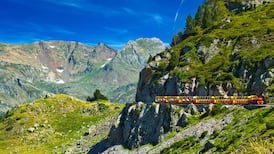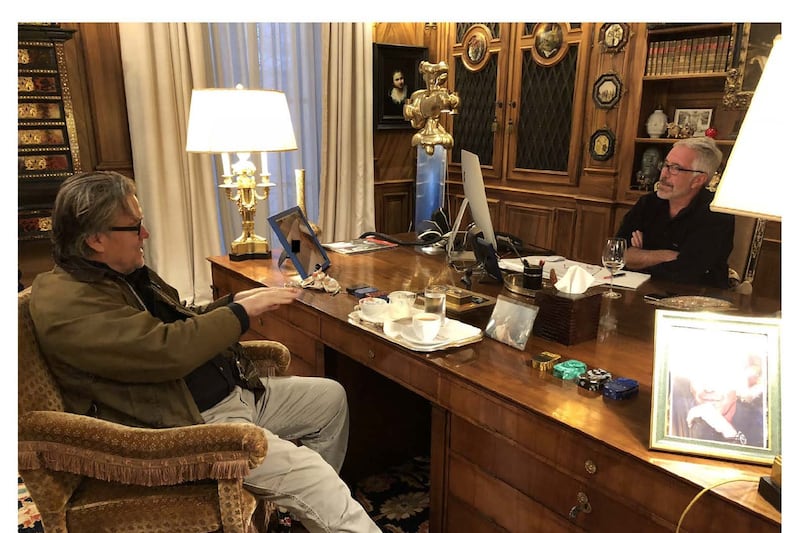Luck. Good fortune. Fate. Destiny. Roll of the dice. We navigate our way through the days, for the most part, with blessed unselfconscious ease. The fact that we go out of our doors in the morning and mostly return unscathed in the evening seems a small daily miracle to me. The things that could happen to endanger your life but don’t are an incalculable number. You can’t think about it, or you would go out of your mind.
I have been travelling the world at regular intervals since 1987, some 32 years. Whatever about going out your own door every day, going out countless new and different doors in new and different places where you do not know the terrain, people or language is a particular kind of challenge. In all that time, I have been very fortunate. I have never once, while elsewhere, been physically or sexually assaulted, robbed or seriously ill. Those are incredibly lucky odds for all the miles beneath my feet, and I feel charmed to have had this record.
It’s not that nothing unpleasant or potentially serious ever happened along the way, though.
IN KATHMANDU, NEPAL, I walked alone back to my guesthouse late at night, turned a corner and saw with horror a pack of three dogs come running towards me. They were barking and snarling with such ferocity they completely cancelled out the sounds of my screaming. I see them still; their teeth bared, gums exposed, their hackles utterly stiff, as they ran around me in ever-tightening circles; wild street dogs that could have rabies. My guesthouse was only metres away, but it might as well have been kilometres. I couldn't think. I could only scream. It was all happening so fast.
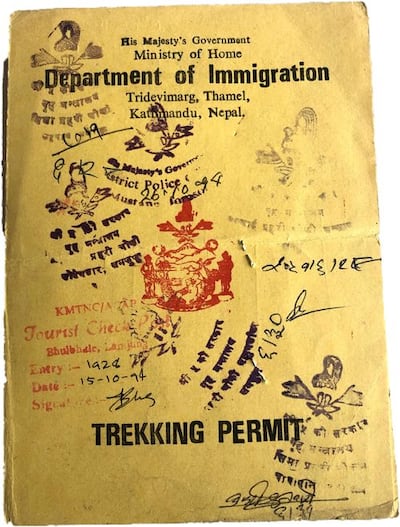
The dogs sensed my terror and began to lunge towards me. I was trying to kick them away. I think I was. I don’t know what I was doing. I couldn’t stop screaming. They were literally running ever smaller rings around me. I had a clear vision of them knocking me to the ground and savaging me with those terrible teeth. Suddenly, the smallest dog lurched in and bit me hard on my right calf; hard enough for its teeth to puncture my skin. In that moment – that nano, split, infinitesimally tiny second – I feared the two larger dogs would also enter the broken circle and start to bite and bite and bite.
I don’t know how I did it, but I was suddenly up on a wall, stones in my hand, throwing them at the dogs, still screaming. There were always stones lying around on the Kathmandu streets. I had managed to grab a fistful while simultaneously springing atop this wall. The dogs fled. I stayed on the wall for some time, still unable to stop screaming, still terrified they would come back and attack me again, between the wall and the safety of my guesthouse door.
The result of that experience was five rabies shots and small stones in my pockets at all times ever after when walking alone in faraway places.
THEN THERE WAS the lampshade in Sri Lanka. I had gone to Sri Lanka because of a book. When I was 26, I read Michael Ondaatje's Running in the Family. It entranced me, right from the first sentence: "What began it all was the bright bone of a dream." You could either say that sentence doesn't make sense, or else see it as a motif for the rest of the book; a shifting journey of memory, imagination and reality through places both real and imagined.
Running in the Family is a kind of travel memoir about Ondaatje's Sri Lankan family; it was a country he left for England when he was 11 and it was still called Ceylon. Parts of the story are fictionalised. Some chapters are simply poems. Nothing in it is linear, or conventional. It defies being placed in any particular genre, which is one of the reasons I loved it so much, and still do.
What he is exploring are the stories of the family and country he left behind as a child. He returns to Sri Lanka as an adult, to seek out both the place it had once been, Ceylon, and the long-dead family members who had remained in his head. He travelled the same railway journeys his family had taken, went to the houses and racecourses and harbours they had been at. His own family came with him from Canada, where he now lived, and he walked with them through heat and monsoon, continually trying to return to a place no one can ever fully access – the past. He writes so beautifully about all this through so many different styles that the book itself reads like one long surreal and impressionistic dream.
I went to Sri Lanka because of an extravagant, hopeful notion that I too could experience some of the surreality Michael Ondaatje describes in Running in the Family
I went to Sri Lanka because of an extravagant, hopeful notion that I too could experience some of the surreality Ondaatje describes. On my first evening, I went walking at sunset on the beach at Negombo. I walked there from my guesthouse through an old churchyard, where a pair of stone angels, their wings broken, were atop both gatepost pillars. The angels were covered with an ephemeral lattice of cream and yellow frangipane blossoms. When I stopped to look, a wild hog appeared from nowhere and ran to hide behind a gravestone in the graveyard, his ferocious squealing giving away his location.
When I returned to my guesthouse, I hooked up my mosquito net to the lamp attached to the wall above my bed. It was hot and humid, and I was not wearing any clothes. I woke early in the morning and was at once keen to start the day; my first day in a new country. Impatiently I jerked the mosquito net. It was hooked over the glass lampshade; a light fitting I had assumed was attached to the wall. It was not.
When I tugged at the mosquito net, it swiftly came falling down. So too did the glass lampshade. It smashed on my forehead. Fragments and shards of glass exploded all over my bare skin. I lay there in shock. Then I became aware of a few things. That my forehead hurt, quite badly. That my naked self was covered with scores of pieces of broken glass. That I was bleeding; blood began to run into one of my eyes.
I lay there immobile for a couple of minutes. I was trying to figure out how to get up without making pieces of glass lodge in my skin; was wondering how many more pieces were on the floor, that I might step on in my bare feet. Slowly, carefully, I sat up. There was blood on the white sheet. I began to brush away the glass from my skin. My torso was covered in many scratches, but they were not deep; they were all minor.
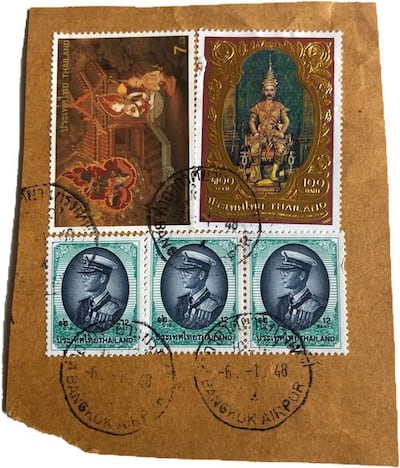
I got off the bed and gingerly picked my way across the floor to the bathroom, where there was a mirror. I looked into it with trepidation. I have never had a reason to be vain, but I was a young woman in my 20s then and afraid my face might be permanently damaged. A large open gash high across my forehead was now bleeding a lot. I did not want to think about the fact that my eyes had escaped being lacerated by glass. I felt a little faint, and held on to the edge of the washbasin for balance. My blood dripped down on its white porcelain.
As if in a daze, I managed to put on some clothes. I took one of the towels from the bathroom, put it under the tap for a while, and held it against my forehead. Then I went to reception, in search of help.
“I think I need a doctor. For stitches,” I managed to say to the astounded man at reception, who called to a colleague.
I wondered if I would pass out. Suddenly I was feeling woozy, and blackness was beginning to crawl in behind my eyes; a sure sign a full-on faint was not far off.
Someone brought me water, and I sat down and put my head between my knees. I began to feel a little better. Someone tapped me gently on the back. It was the man from the reception desk.
“Come, madame,” he said. He was holding a large umbrella.
I had not even realised it was raining outside; an early-morning monsoon rain. We stepped out into a blizzard of felled frangipani petals and the sweet scent of jasmine that permeated the air. The rain fell like a collapsing orchestra, playing different sounds on the leaves, the tin roofs, the awnings we were walking among. We walked through the village side by side in the insistent, extraordinary rain, me still holding the wet towel to my forehead, and he tilting the umbrella over me so carefully, so tenderly, so protectively; a human guardian angel sheltering me under a wing, until we reached the doctor’s surgery.
The result of that experience is a permanent jagged little scar high on my forehead, and extreme care when hanging a mosquito net ever since.
THEN THERE WAS the snake in Cambodia. There is always a snake experience somewhere in every country that has snakes. Mostly, snakes stay away from you. I wasn't really afraid of encountering one, which was good, because I did, from time to time. In Australia, quite often. In Hue in Vietnam, a snake's black head suddenly rising like a startled giraffe from a rice field I was walking in, right beside me. In Laos, coiled up asleep in the sun on a pathway in front of me, when I was walking one morning near Luang Prabang.
At Siem Reap, I had hired a motorbike driver, or "moto" driver, as they were known as, to take me round the temples of Angkor. He had been at the temples a hundred times; a thousand times. Vithu cheerfully drove me to whatever temple I wanted to see, then waited outside while I went to explore, chatting or eating or smoking with the other moto drivers. It was my second afternoon of three days at the temple complex when I arrived at Preah Khan.
I ran. Away from the snake. Away from the tourists running after the snake with their cameras. The pit viper had fallen out of the tree exactly where I had walked a nanosecond before
I always wore a sun hat, but I had it in my hand that afternoon as I was walking towards the temple. I couldn’t make it stay on my head while on the moto. I walked into the jungly entrance of Preah Khan, dreaming as usual, in the hot still afternoon, amazed all over again by the stone carvings I had seen, the apsaras, the friezes, the jigsaw of blocks of stones, the garudas, the nagas, the size and scale of this marvellous place.
Suddenly I heard something thud to the ground just behind me, where I had been walking a moment before. In the same instant, I heard a weird chorus of screaming go up behind me. I turned immediately. What I saw was a snake I later discovered was a green tree pit viper, undulating at speed towards the undergrowth. What I also saw was a group of Japanese tourists, shrieking and running after the snake, cameras pointed.
I ran. Away from the snake. Away from the tourists running after the snake with their cameras. The pit viper had fallen out of the tree at the exact place I had walked underneath a moment – a nano, split, infinitesimally tiny second – previously. If I had passed in that tiny second earlier, the snake would have fallen on my unprotected head and neck, and who knows where it would have gone then. Down the back of my open-necked shirt? Coiled around my neck in an effort to stop falling? Grasped hold of the arm I would instinctively have raised?
Green tree pit vipers usually live in trees, wrapping themselves around branches, until they unexpectedly fall out of one. The one I saw was about half a metre long. They are venomous and, unsurprisingly, due to their everyday habitat, most of their bites to humans are to the neck or face. No pair of boots will protect you from an arboreal snake falling onto your head and neck.
When I was finished exploring Preah Khan, I went back out to find Vithu. I still did not know what kind of snake it had been. I told him the story. I told him the vivid lime-green colour of the snake, and that it had fallen out of the tree I was walking under. I expected him to laugh it off. Vithu did not. Instead, he looked at me with an expression of fear.
The result of that experience is that I did not fully enjoy exploring the remainder of Angkor’s temples.
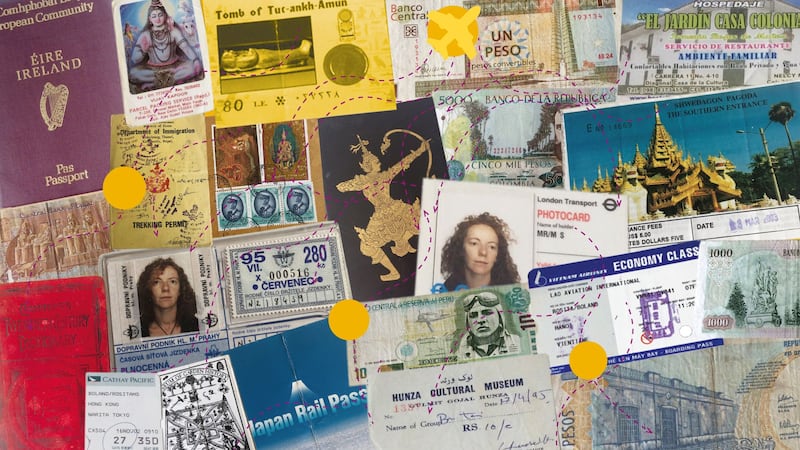
I KNEW WHAT the word tsunami meant long before 2004. I had a postcard with a reproduction of Hokusai's most famous woodblock, The Great Wave off Kanagawa; the huge wave falling like a deconstructed mountain. Apparently it doesn't actually depict a tsunami wave, but a tidal wave. No matter what the art experts said, whenever I heard the word tsunami, it was always Hokusai's terrifying, almost fictional, disruption of the ocean that flashed into my head.
Sometimes, in Asia, I stood on piers or beaches and scanned the horizon, the image of a tsunami in my head. What I was always looking for was an unnaturally giant wave. Even though I knew what a tsunami was, I did not then know it is preceded by the tide being violently sucked far, far out. I did not realise I was never on guard for the correct warning signal. The wave appears shortly before it breaks. It had never occurred to me to examine the structure of the Japanese word tsunami: tsu, harbour; nami, wave.
I rarely planned anything when I was travelling, and this proved problematic at Christmas time in Thailand. I discovered that lots of people were arriving from overseas just for the holiday season, so getting accommodation was a whole lot harder and much more expensive than usual. Flights were full, berths on overnight trains were booked out, ferries were crowded. I couldn't settle anywhere; couldn't find a place I felt like staying in.
By Christmas Day, I had arrived in Koh Phi Phi Don. It's an island close to Koh Phi Phi Leh, which featured in the movie The Beach; where you cannot actually stay, just visit by longboat on a daytrip. My ferry arrived on the south side of the island, into Ton Sai Bay. The island is shaped like the kind of bone a dog in a cartoon would eat: long and narrow in the middle and raised up on either side. It's a small island, and it was literally a walk of a few minutes from the pier at Ton Sai Bay to Loh Dalum Bay on the north side.

I wandered around, looking for a room close to the beach. Most of the accommodation was full. I crossed over to the northern side of the island and, in another complex, which I think was called the Princess, I was offered a bamboo hut on stilts, but it was more than I felt like paying and a bit isolated. I like a buzz, and being near things, especially when I’m alone.
The room I took was a small concrete bungalow at a complex called Charlie’s, very close to the place I had just looked at, with bamboo huts among the coconut trees. It was pretty much on the beach, overlooking Loh Dalum Bay.
I have gone over that place so often in my head. The frankly ugly concrete bungalow, one of some 25 others. “Bungalow” is a misnomer; they were all small rooms, built separately from each other. It was so utterly nondescript. The window on the right of the door, a double bed with a languid fan overhead, the door to the bathroom opposite the entrance door, the desk with a mirror over it that I could see myself in when I sat up in bed. It had no charm. The only good thing about it was its proximity to the curving beach.
I stayed at Charlie's right up until New Year's Day. From the list I made at the back of my diary of the books I read along the way, I can see that the first was When We Were Orphans by Kazuo Ishiguro, Cold Mountain by Charles Frazier, and then The Glass Palace by Amitav Ghosh on Koh Phi Phi Don. You read indiscriminately – or at least I did, before technology – literally whatever books you could find, or swap, or buy along the way. It was the first time I had read Ishiguro, and I distinctly recall lying on my bed one afternoon, when I had just finished the book, and trying to shake off the melancholy it had cast over me. I wished I hadn't read it; that I didn't have that indefinable sadness and mannered loss now in my head. I can't recall anything of the plot, other than part of it was set in Shanghai and involved a child mysteriously separated from his parents, but I remember how strange and unsettled it made me feel.
I never thought about Charlie's again until St Stephen's Day two years later. I woke up to hear the horrific news of the tsunami
I spent an hour or so every morning lingering over breakfast, writing my diary and looking out over the ocean. I see that beach still, its shallow curve bounded on either side by hills. I read, swam, wandered around the little tourist shops, went on a boat trip snorkelling one day, and did not do much else; was fretting for New Year to be over and go onwards to less crowded places. Sometimes, in the afternoons, I went to the open-air bar at Charlie's, where grainy bootleg movies were shown. Once I watched A Knight's Tale, starring the still-undead Heath Ledger. In the evenings, if I wanted to be by myself, I went to a bar near the beach, and if I wanted company, I liked to go to a bar called Tintin's, or another called the Reggae Bar.
On New Year’s Eve, the staff at Charlie’s set up tables and chairs on the beach and ran an expensive buffet dinner for its guests. If you were staying there, the New Year’s dinner was a mandatory cost, a practice common at many guesthouses. I shared a table with three Frenchmen, and at midnight we ran laughing into the sea together, fully clothed, while flares and fireworks went off on the beach. I departed the next day, and never again thought about Charlie’s or my wholly unremarkable time on Koh Phi Phi Don.
Never thought about it again, that is, until St Stephen’s Day, two years later. I woke up to hear the horrific news of the tsunami that had devastated the coast and islands of so many parts of South East Asia. It took some time for the scale of it to register. So many places affected. So many dead. So much devastation. I could barely comprehend what had happened.
THERE WAS LITTLE social media in 2004, but at the time I was on a Lonely Planet discussion forum called Thorn Tree where people posted questions and answers about travel. I tried to find out what I could about Koh Phi Phi Don, and what had happened there. I had to stop. It was too distressing to read the frantic messages of people trying to locate family and friends who had been there when the wave hit.
It was on the northern side of the island, the beach on Loh Dalam Bay, that I and the three French tourists ran into the sea at midnight; it was here the tsunami came roaring in, destroying, demolishing, killing, drowning, eviscerating.
I could not stop thinking: what happened to all those people working and staying at Charlie’s? The women who brought me breakfast every morning? The man who put on the afternoon bootleg videos? The women who swept out the huts? The chefs who cooked the New Year’s Eve dinner? The unknown person or couple staying in the hut I had occupied, two years previously? And the people in the other squat concrete bungalows, which would all be full, because it was so hard to get accommodation on the islands at that time of year? I couldn’t bear to think about it, and yet I could not get it out of my head. When I closed my eyes, I saw again my doomed nondescript room in Charlie’s; a coffin in the making.
Eventually I discovered that almost everyone working and staying at Charlie's had died in the tsunami. It was the resort closest to the beach, the first place the wave struck
The truth is, eventually I discovered that almost every one of those people working and staying at Charlie’s had died. It was the resort closest to the beach, with the Princess next to it, and was the first place the wave struck.
We almost never know when death will arrive. But it is rare to be able to identify both a particular day in your life, and a location where you know that if you had been there on that precise date a certain number of years into the future, you would have died. It seems almost crass to dwell on it when so many people died; when so many others must have been severely traumatised by the sheer randomness of missing the tsunami by a week, a day, an hour.
And yet, I do occasionally think about being at Charlie’s on that Thai island for Christmas 2004. It’s human nature to wonder how we have managed to survive as long as we already have; to regard with shock from a safe distance how the unseen pattern life has for us all can suddenly take so many people at once; some sinister trapdoor can open unexpectedly beneath us due to fate, coincidence and a terrifying act of nature.
SINCE I LEFT Koh Phi Phi Don, I have lost peers and friends of different ages to death in unexpected, painful and traumatic scenarios. More than one to suicide. Two to cancer. One to a rare reaction to a certain illness. One younger than me to heart failure when she lay down to sleep as usual one Saturday evening; a sleep she never awoke from, leaving behind a small son and stunned husband.
I recall exactly where I was when I received the news about each of them. The most difficult memory of all is from the first day of my Christmas holiday in 2011. I was delivering cards mid-morning to neighbours in our little cul-de-sac when my phone rang. I was walking up a flight of stone steps at the time, phone in one hand, ready to push an envelope through the next letterbox; idly figuring out which dress I would wear to a party later that day.
The call was from my close friend and colleague, Róisín. She was crying so hard that initially I couldn’t make out what she was saying, but I finally registered the name of a fellow beloved friend and editor, and the word “dead”. She had been found in the sea the previous night and died a few hours later in hospital.
The news of that particular, utterly tragic and devastating death remains one of the worst shocks I’ve ever had. I went into a weird, intense, automatic zone for at least a month, unable to believe or process what had happened. The funeral was on Christmas Eve. I knew the only way I could get through it was by working, because my professional self would then have to mercifully take over.
I had learned almost everything of value I knew about journalism from the person we were gathered to mourn, who had had such warmth and always been so joyously full of life
Together with another friend and colleague, Kathy, I volunteered to report on the funeral. On a bone-cold Christmas Eve morning, I stood outside Newman University Church on St Stephen’s Green as the mourners arrived. As I gathered tributes, I felt that the notebook I was fiercely holding on to was doubling as a shield to protect from any more damage. People I knew were trying to sympathise with me on the loss of a colleague that the whole of literary Dublin held dear, but I didn’t want to hear their condolences: it would have broken me entirely. I cut off their sympathies mid-sentence and grimly collected names and quotes for my article instead.
I had learned almost everything of value I knew about journalism from the person we were gathered together to mourn; my inspirational and trusted mentor, who had had such warmth and generosity of spirit and had always been so joyously full of abundant life. She periodically dropped treasured jewels of insight on my desk while passing– she was someone perpetually in movement. In one of these rushed and random pilgrimages to my desk, she had instructed me always to listen carefully while interviewing someone for what she described as “la ligne donnée” – the given line.
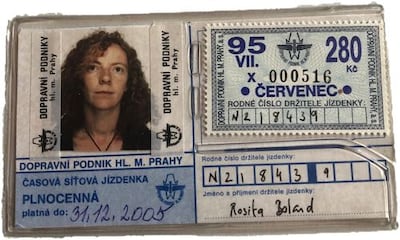
It’s the sentence that identifies the core and nub and raison d’être of everything; whether a person, a situation, or a story. She taught me that you have to keep going with the work and the interview until you hear someone say “la ligne donnée”; but the true skill is in learning to recognise this utterance and knowing with certainty when you hear it. Then, you analyse what it means and why it is important, and use it as a depth-sounder to report further and yet further; something I try very hard to do in every long-form story I work on. To be reporting on my cherished editor’s funeral that day was very close to unbearable, but someone had to do it, and I knew that it was the best possible gesture I could offer to her bereaved family.
Kathy and I had made a pact to stay together while we wrote up our pieces; to take care of each other as best we could during this dreadful self-imposed task. After the funeral, we went back to the newspaper’s office, festooned with its ridiculous festive tinsel, deserted except for the security guard. Her daughter briefly arrived with sandwiches and coffee neither of us had any appetite for. The two of us sat numbly at adjacent desks, writing while people passed under the windows four floors beneath, drunkenly singing Christmas carols.
It was Kathy, reporting from inside the church, who identified and pulled out the note-perfect “ligne donnée” of the day. It was a sentence from the eulogy our friend’s husband gave the congregation about the legacy his wife was leaving. “The great enterprise that was her life, the stardust she scattered every single day.”
So many of us gathered in that church had experienced her stardust; something that glitters on me still.
It is a brutal cliche in a profession that abhors cliches, but I have learned over time that life is very short and very precious and sometimes horrifyingly truncated for reasons that make no sense. My late editor’s photograph stands on my desk at work: it’s been there since the day I returned to the office after her death, and it will remain there until the day I leave the building for the last time. Sometimes I look at it, and wonder what advice she would impart about whatever story I am currently working on, or whatever personal dilemma is presently facing me.
All I can do is appreciate my luck in having survived thus far in my own life, and vow afresh never to take for granted the momentous fact of simply being alive
I’ll never know the answers to those questions. All I can do is appreciate my luck in having known and learned from her, and having survived thus far in my own life, and vow afresh never to take for granted the momentous fact of simply being alive. I cannot imagine how those people who survived or only just escaped the Asian tsunami that destroyed Charlie’s and all those unthinkably many other places navigated their way through life afterwards, but I am certain most of them never again took their lives for granted.
There is a form of Chinese calligraphy, dishu, that involves writing on surfaces with a paintbrush dipped in water. The characters briefly glisten into visibility, and then vanish; a body of words disappearing into the ground. Our lives are as ephemeral as words written in water.
Elsewhere: One Woman, One Rucksack, One Lifetime of Travel is published by Doubleday Ireland on Thursday, May 30th
Rosita Boland will be in conversation with her colleague Róisín Ingle at Borris House Festival of Writing & Ideas, in Co Carlow, on Sunday, June 9th





